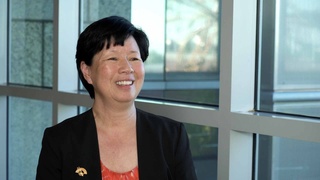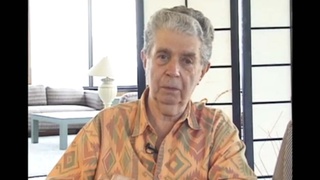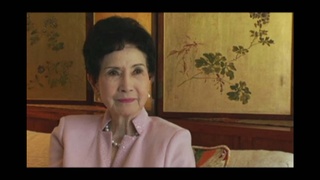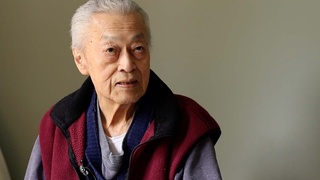Interviews
Collection of artifacts depicting racial stereotypes influences art
And then I have World War II postcards that depict the World War II Jap with the buck teeth and slanted eyes, yellow-skinned and their endless depiction of -- and I almost have all of 'em now. I must have about thirty or forty of 'em. And other ones that are just really foul, dogs urinating on Jap heads and things, defecating on them, and they're all these different versions. I have magazine advertisements of those same kinds of depictions, Jap hunting licenses that companies gave away, you put stamps on 'em and how many Japs you've killed. I have Slap a Jap cards that were clubs that you would join and every time you were supposed to slap the Jap that you saw. Patriotics, which were envelopes that you use with images on there that were the stereotypes of, of Japanese people, so just about anything that had to do with depictions, negative depictions of Japanese people.
And, of course, all of these things end up informing my paintings, so I've been working on a series called Stereotypes & Admonitions where I depict myself, sometimes as a samurai from a ukiyo-e woodblock print, because that refers to how people see me as the person from Japan, or as that World War II yellow peril threat, which is still that kind of eternal foreigner, but more of a threat. And so what I'll do is I'll put myself under one of those two disguises within a Western framework, so it also refers to that idea of, when you tell a white person that not a day goes by where you don't realize that you're not white, they don't understand what you mean. And that's what this refers to because it's so dramatized with these horrible depictions.
Date: March 18 & 20, 2003
Location: Washington, US
Interviewer: Alice Ito and Mayumi Tsutakawa
Contributed by: Denshō: The Japanese American Legacy Project.
Explore More Videos

Importance of overcoming Asian American stereotypes
Sansei judge on the Superior Court of Los Angeles County in California

Challenges faced by female judges
Sansei judge on the Superior Court of Los Angeles County in California

Influence of Mexican culture after returning from camp
(b. 1943) Japanese American transgender attorney

Dancing in Japan as an American, in the US as Japanese
(1918-2023) Nisei Japanese kabuki dancer

Discrimination in San Francisco
(1914–2015) Nisei YMCA and Japanese American community leader

Encountering racial discrimination at a public swimming pool
(b. 1923) Nisei from Washington. Resisted draft during WWII.

His testimony has more credibility because of his race
(1922 - 2005) Former U.S. Army counterintelligence officer

Gender discrimination in education field
(1925 - 2018) Nisei educator from Hawai‘i

Learned what it meant to be called “Jap” in Heart Mountain
(1934–2018) Japanese American designer, educator, and pioneer of media technologies

First impression of New York City during war time
(1915 - 2011) Nisei florist who resettled in New York City after WW II. Active in Japanese American civil rights movement

The day Pearl Harbor was bombed
(1922–2014) Political and civil rights activist.

Not bringing shame to family
(1926 - 2012) Scholar and professor of anthropology. Leader in the establishment of ethnic studies as an academic discipline

Past ties to present situation in Middle East
(1926 - 2012) Scholar and professor of anthropology. Leader in the establishment of ethnic studies as an academic discipline

Didn't have rights that whites had
(1922–2014) Political and civil rights activist.

Californians didn't know about evacuation
(1922–2014) Political and civil rights activist.
